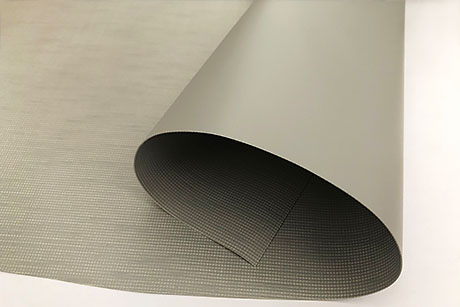Tarps News Categories

When the PVC coated fabric manufacturer makes PVC coated fabric, in order to enhance its use effect, some additives are added, and heat stabilizer is one of the commonly used additives. However, what are the heat stabilizers that can be added?
1) Composite metal salt: a common type of heat stabilizer. It is usually sold as a preformed liquid, paste or powder. Commonly used varieties are barium-cadmium, barium-calcium-zinc, barium-zinc, calcium-zinc and calcium-magnesium-tin-zinc fatty acid salts. This heat stabilizer is usually used in combination with organic additives (such as phosphites, epoxy compounds, polyols and phenolic antioxidants) to form a composite heat stabilizer, which meets the requirements of different processing technologies and product applications.
2) Lead salt: one of the earlier applications of heat stabilizers. It has excellent long-term thermal stability, weather resistance and electrical insulation, but it affects the transparency of the product, is toxic, has initial coloring, is easy to vulcanize, and has poor compatibility and dispersion with PVC. Lead salt is not lubricating and should be used in combination with metal soap lubricant. Commonly used varieties are ternary lead sulfate and binary lead phosphite. Used to make opaque PVC sheets, pipes and wire and cable sheaths.
3) Special heat stabilizer: refers to some pure organic compounds with special effects, such as α-phenylhydrazine, amino crotonate used in alkaline emulsion polymerization of polyvinyl chloride, and used in asbestos-filled polyvinyl chloride floor materials Pentaerythritol or dicyandiamide.
4) Organotin: These heat stabilizers are mainly used in various soft PVC products that require transparency. Commonly used varieties are maleate, thiolate and carboxylate. Among them, di-n-octyl tin maleate, S, S'-bis (isooctyl thioglycolate) di-n-octyl tin can be used as a non-toxic stabilizer for food and pharmaceutical packaging materials.
you may also like
- PVC knife coating fabric raw material for truck cover-Yellow
- Industrial heavy transparent curtains clear PVC Tarpaulin Vinyl Tarp clear divider curtains
- 20' X 27' 10 oz Super Light Lumber Tarp 6 drop
- Hot Sale PVC Coated OEM Mesh Tarp With Grommets
- Strong Transparent Clear Vinyl Tarps Clear Plastic Tarp
- Ultra Lightweight Airbag Parachute Lumber Tarp with 8 foot Drop
- 60% 12ft x 12ft shade PVC Vinyl Black Mesh Tarp Dump Truck Tarps
- PVC Transparent Clear Vinyl Tarpaulin with Grommet
- 22 OZ. Pvc Coated Fabric
- 24 ft X 20 ft LUMBER TARP 3 ROWS D RINGS Oversized Load Tarps
others also viewed
- Folding method of pvc vinyl tarps
- The Difference Between PE And PVC Tarpaulin
- Advantages of Clear PVC Vinyl Tarps
- What Is The Longest Lasting Tarp Material?
- Industrial fabric popular science series Two---Coating and film
- What Are Mesh Tarps Used For? Do It Block The Wind?
- Clear vinyl Detailed introduction
- Jumtarps at IFAI Expo 2022
- What is Knife Coated Tarpaulin?
- How to choose a tarp tent




